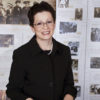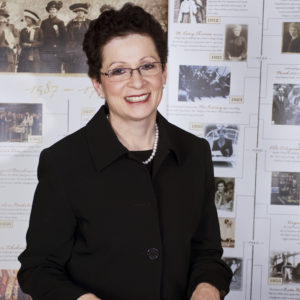The History of Women Astronomers



Jill S. Tietjen, PE, is an author, national speaker, and…
On August 21, 2017, the first total solar eclipse in 99 years visible from coast to coast became a national event in the U.S. Millions of people drove to be within the band of totality; millions of others viewed the eclipse from their homes and offices through special eclipse glasses. This astronomical event causes us to think about the early women astronomers who helped contribute to our knowledge of the heavens.
This month, we are pleased to feature these women astronomers, Maria Mitchell, Williamina Stevens Fleming, Annie Jump Cannon, Henrietta Swan Leavitt and Vera Rubin.
 The first professional woman astronomer and, in 1848, the first woman to be elected to the American Academy of Arts and Sciences Maria Mitchell’s interest in astronomy was fostered by her father. By age 12 ½, she had helped her father calculate the exact moment of an annular eclipse. As was typical of upper class women of her day, she attended a private school. After completing her education, she taught until she was offered a job as a librarian. In 1847, she discovered “Miss Mitchell’s Comet” with her telescope. For this feat, she was awarded a Gold Medal from the King of Denmark. In 1865, she became the first faculty member at the just opening Vassar College. As professor of astronomy and the director of its observatory, she would influence generations of women students. Mitchell has been inducted into the National Women’s Hall of Fame.
The first professional woman astronomer and, in 1848, the first woman to be elected to the American Academy of Arts and Sciences Maria Mitchell’s interest in astronomy was fostered by her father. By age 12 ½, she had helped her father calculate the exact moment of an annular eclipse. As was typical of upper class women of her day, she attended a private school. After completing her education, she taught until she was offered a job as a librarian. In 1847, she discovered “Miss Mitchell’s Comet” with her telescope. For this feat, she was awarded a Gold Medal from the King of Denmark. In 1865, she became the first faculty member at the just opening Vassar College. As professor of astronomy and the director of its observatory, she would influence generations of women students. Mitchell has been inducted into the National Women’s Hall of Fame.
 Williamina Stevens Fleming was the first of “Pickering’s Women” – a group of women hired by Edward Pickering at the Harvard Observatory to complete the Henry Draper Catalogue – mapping and defining all of the stars in the sky with a certain photographic magnitude. She was hired after serving as a maid in Pickering’s home. Pickering is rumored to have said: “My Scottish maid could do better” than the men who were serving as “computers” at the observatory. Fleming was hired in 1881 and developed a classification system, later improved upon by Annie Jump Cannon. Fleming catalogued more than 10,000 stars. She discovered 59 gaseous nebulae, 310 variable stars, and 10 novae. She is probably most noted for her discovery of the Horsehead Nebula in 1888. Fleming was the first American woman made an honorary member of the Royal Astronomical Society. A lunar crater was named jointly for her and Alexander Fleming.
Williamina Stevens Fleming was the first of “Pickering’s Women” – a group of women hired by Edward Pickering at the Harvard Observatory to complete the Henry Draper Catalogue – mapping and defining all of the stars in the sky with a certain photographic magnitude. She was hired after serving as a maid in Pickering’s home. Pickering is rumored to have said: “My Scottish maid could do better” than the men who were serving as “computers” at the observatory. Fleming was hired in 1881 and developed a classification system, later improved upon by Annie Jump Cannon. Fleming catalogued more than 10,000 stars. She discovered 59 gaseous nebulae, 310 variable stars, and 10 novae. She is probably most noted for her discovery of the Horsehead Nebula in 1888. Fleming was the first American woman made an honorary member of the Royal Astronomical Society. A lunar crater was named jointly for her and Alexander Fleming.
 Annie Jump Cannon studied physics and astronomy at what today is Wellesley College. In 1896, she was hired by Edward Pickering as one of the “Pickering Women.” Pickering grew to admire her cataloguing capabilities saying: “Miss Cannon is the only person in the world – man or woman – who can do this work so quickly”. She developed the system of classifying the stars into what is today called the Harvard Classification Scheme. Her first catalogue of stellar spectra was published in 1901. In total, she classified 350,000 stars. Cannon identified 300 variable stars, five novae, and one spectroscopic binary. Her efforts were recognized – she became the Curator of Astronomical Photographs at Harvard in 1911. Among her many awards, Cannon was made an honorary member of the Royal Astronomical Society and received honorary doctorates icluding the first ever presented to a woman by Oxford University. She has been inducted into the National Women’s Hall of Fame and a lunar crater and an asteroid have been named for her.
Annie Jump Cannon studied physics and astronomy at what today is Wellesley College. In 1896, she was hired by Edward Pickering as one of the “Pickering Women.” Pickering grew to admire her cataloguing capabilities saying: “Miss Cannon is the only person in the world – man or woman – who can do this work so quickly”. She developed the system of classifying the stars into what is today called the Harvard Classification Scheme. Her first catalogue of stellar spectra was published in 1901. In total, she classified 350,000 stars. Cannon identified 300 variable stars, five novae, and one spectroscopic binary. Her efforts were recognized – she became the Curator of Astronomical Photographs at Harvard in 1911. Among her many awards, Cannon was made an honorary member of the Royal Astronomical Society and received honorary doctorates icluding the first ever presented to a woman by Oxford University. She has been inducted into the National Women’s Hall of Fame and a lunar crater and an asteroid have been named for her.
 Hired in 1893 as one of the “computers” or “Pickering Women” Henrietta Swan Leavitt had graduated from Radcliffe College. Her task was to study the variable stars. Through her investigation of the variable stars in the Magellanic Clouds, she noted, and published a paper on, the observation that brighter stars appeared to have longer periods. Indeed, after further work, she found that the Cepheid variables with greater luminosity did have longer periods and that the relationship was stable and predictable. Leavitt had discovered what is called “period-luminosity relationship” or “Leavitt’s Law.” She also developed and refined the Harvard Standard for photographic measurements. Period-luminosity relationships changed our concept of the universe allowing calculations of distances for remote galaxies, changing our perception of our sun in the Milky Way galaxy and determining that our galaxy was not the center of the universe. Her discovery paved the way for the modern understanding of the structure and scale of the universe. An asteroid and a lunar crater are named in her honor.
Hired in 1893 as one of the “computers” or “Pickering Women” Henrietta Swan Leavitt had graduated from Radcliffe College. Her task was to study the variable stars. Through her investigation of the variable stars in the Magellanic Clouds, she noted, and published a paper on, the observation that brighter stars appeared to have longer periods. Indeed, after further work, she found that the Cepheid variables with greater luminosity did have longer periods and that the relationship was stable and predictable. Leavitt had discovered what is called “period-luminosity relationship” or “Leavitt’s Law.” She also developed and refined the Harvard Standard for photographic measurements. Period-luminosity relationships changed our concept of the universe allowing calculations of distances for remote galaxies, changing our perception of our sun in the Milky Way galaxy and determining that our galaxy was not the center of the universe. Her discovery paved the way for the modern understanding of the structure and scale of the universe. An asteroid and a lunar crater are named in her honor.
 Benefiting from the legacy of and inspired by Maria Mitchell, Vera Rubin studied astronomy at Vassar College. Her interest in astronomy was sparked by looking out of her window at the stars and by age ten, with the help of her father, she had made a crude telescope out of cardboard. During her graduate studies, she discovered discrepancies in the motions of the galaxies. Although her conclusions were very controversial and not accepted at the time, Rubin had discovered the galaxy rotation problem which was evidence for the existence of dark matter. Her many awards included the Bruce Medal, the Gold Medal of the Royal Astronomical Society, and election to the National Academy of Sciences. In 1993, she received the National Medal of Science “for her pioneering research programs in observational cosmology which demonstrated that much of the matter in the universe is dark, and for significant contributions to the realization that the universe is more complex and more mysterious than had been imagined.” Rubin was also known throughout her career as an advocate for women in science and a mentor of women aspiring to become astronomers. An asteroid has been named in her honor.
Benefiting from the legacy of and inspired by Maria Mitchell, Vera Rubin studied astronomy at Vassar College. Her interest in astronomy was sparked by looking out of her window at the stars and by age ten, with the help of her father, she had made a crude telescope out of cardboard. During her graduate studies, she discovered discrepancies in the motions of the galaxies. Although her conclusions were very controversial and not accepted at the time, Rubin had discovered the galaxy rotation problem which was evidence for the existence of dark matter. Her many awards included the Bruce Medal, the Gold Medal of the Royal Astronomical Society, and election to the National Academy of Sciences. In 1993, she received the National Medal of Science “for her pioneering research programs in observational cosmology which demonstrated that much of the matter in the universe is dark, and for significant contributions to the realization that the universe is more complex and more mysterious than had been imagined.” Rubin was also known throughout her career as an advocate for women in science and a mentor of women aspiring to become astronomers. An asteroid has been named in her honor.
These amazing and accomplished women worked to enhance our understanding of the heavens. They and many other women – almost all of them women we have not heard about and not learned about in school – across all fields of endeavor – more than 850 all together – are profiled in our book, Her Story: A Timeline of the Women Who Changed America. Help us by continuing to tell women’s stories and write women back into history!
Copyright © 2017 Jill Tietjen and Charlotte Waisman all rights reserved
Charlotte S. Waisman, Ph.D., and Jill S. Tietjen, P.E., co-authors of Her Story: A Timeline of the Women Who Changed America (HarperCollins) and recipients of the Daughters of the American Revolution History Award Medal. Charlotte is a national champion and advocate for women as a professor and keynote speaker. A corporate leader, executive coach, and facilitator, she conducts leadership workshops nationally. Jill is an author, speaker, and electrical engineer. She has been inducted into the Colorado Women’s Hall of Fame.
Author: Jill Tietjen
Jill S. Tietjen, PE, is an author, national speaker, and an electrical engineer. After 40 years in the electric utility industry, her professional focus is now on women’s advocacy, worldwide. She blogs for The Huffington Post, speaks nationally on the accomplishments of women, nominates women for awards, and continues to write books (8 published to date), following in the footsteps of her bestselling and award-winning book, Her Story: A Timeline of the Women Who Changed America (written with Charlotte Waisman). She is a frequent keynote speaker as her positive energy and her ability to relate to the audience result in inspired and energized listeners. The recipient of many awards, her induction into the Colorado Women’s Hall of Fame in 2010 remains one of her most treasured.

Jill S. Tietjen, PE, is an author, national speaker, and an electrical engineer. After 40 years in the electric utility industry, her professional focus is now on women’s advocacy, worldwide. She blogs for The Huffington Post, speaks nationally on the accomplishments of women, nominates women for awards, and continues to write books (8 published to date), following in the footsteps of her bestselling and award-winning book, Her Story: A Timeline of the Women Who Changed America (written with Charlotte Waisman). She is a frequent keynote speaker as her positive energy and her ability to relate to the audience result in inspired and energized listeners. The recipient of many awards, her induction into the Colorado Women’s Hall of Fame in 2010 remains one of her most treasured.


